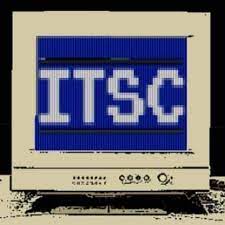The recent “HITS in the cloud” webinar, hosted by Altron Digital Business and Microsoft South Africa, had a single message: SQL Server remains at the centre of enterprise operations.
SQL is ubiquitous, recording every transaction and underpinning compliance, but it must now serve a hybrid and multi-cloud world. Azure Arc extends its abilities to wherever data lives, linking on-premises systems, other cloud providers, and edge environments.
For technology leaders managing IoT and distributed data, this evolution my change how estates are monitored and secured. It could also change how legacy systems fit into digital transformation projects.
Extending Azure beyond the cloud
Pieter le Roux, technical pre-sales lead at Altron Digital Business, explained that it allows teams to work wherever SQL servers run. It can now integrate with Copilot for Azure to build dashboards and generate insights, and for older systems like SQL Server 2012 (now out of support), Arc offers a pathway back into compliance through extended updates and centralised governance.
By bringing disconnected servers under one management plane, enterprises can modernise and perhaps regain some lost control. The same policies and standards can now apply whether a database sits in Johannesburg, London, or in a distant cloud.
Governance and compliance through a single lens
Centralised management featured strongly in the session. Le Roux described how one deployment point allows monitoring, patching and security enforcement. Frameworks like GDPR, Popia, CIS, NIST and ISO 27001 can be applied from the single console, and when new services are built or servers added, they have to meet those baseline standards. Role-based access control further defines who can act, view, or approve changes.
For IoT teams, the biggest implication is that compliance can be automated in the full device-to-database chain. Policies become code, and the governance ring-fence extends to edge systems that previously sat outside the scope of easy oversight.
Continuity, licensing and modernisation
Le Roux outlined how Azure Arc supports migration and modernisation: Legacy SQL instances can remain online while readiness assessments evaluate whether they can move to the cloud. Once migrated, databases gain cloud-flavoured scalability and resilience, potentially without being rebuilt.
Licensing issues also got some coverage at the “HITS in the cloud” webinar. Traditional perpetual licences get reclassified as pay-as-you-go – this may or may not be a good thing, depending on circumstances. But in wholly positive news, when a development server, for example, is powered down, licence charges stop. For enterprises balancing hundreds of connected environments, that can translates to savings.
Observability and automation
Azure Arc centralises observability so administrators can view performance, apply updates, and track configuration drift from the single portal. Integration with service desks allows automatic ticket creation and remediation, and Copilot sees use as a natural-language interface, so staff can query the system and get help writing reports.
This level of observability links directly to IoT management. Databases supporting sensor networks or telemetry systems can be monitored alongside applications and edge nodes. Automated health checks can help ensure that data remains reliable, and issues are flagged before they cascade into downtime.
Structuring transformation with the HITS framework
The webinar introduced the HITS framework – Highly Available, Innovative, Transformative, Secure – as the foundation for cloud modernisation, with each principle shaping how SQL estates are rebuilt or extended. By applying those principles, organisations are presented with a template for change rather than having to plan ad-hoc migrations.
For South African firms and other regulated markets, Arc and HITS offer a way to modernise under tight compliance conditions. They provide structured governance under infrastructure constraints and cost pressures.
What this means for enterprise IoT teams
IoT operations depend on data consistency and secure integration. Azure Arc’s approach helps to unite cloud and edge assets, giving technology teams a shared control layer for large fleets: For OT and IT leaders, the alignment reduces fragmentation; governance applies equally to a factory sensor database or a cloud-hosted analytics platform; observability ensures data pipelines are monitored end-to-end.
Leaders should be aware that team composition may evolve, database administrators can shift toward automation and policy managers, and cloud engineers can handle cross-platform integration, while compliance specialists oversee rule enforcement through Arc’s dashboards. The ideal outcome is not additional complexity but a streamlined model built on visibility and shared accountability.
Modernisation as a managed process
The key takeaway from the webinar was that SQL Server modernisation is achievable and measurable. Azure Arc makes it possible to unify management, automate governance and control cost without halting operations, Microsoft claims. It can turn legacy estates into governed assets ready for hybrid deployment.
Le Roux said that IoT and data teams get reliable databases, continuous insight, and compliance that scales as the network grows.
(Image source: “Factory” by decafinata is licensed under CC BY-SA 2.0. )


Want to learn more about IoT from industry leaders? Check out IoT Tech Expo taking place in Amsterdam, California, and London. The comprehensive event is part of TechEx and co-located with other leading technology events. Click here for more information.
IoT News is powered by TechForge Media. Explore other upcoming enterprise technology events and webinars here.
The post Azure Arc SQL uniting enterprise data and IoT first appeared on TechToday.
This post originally appeared on TechToday.
